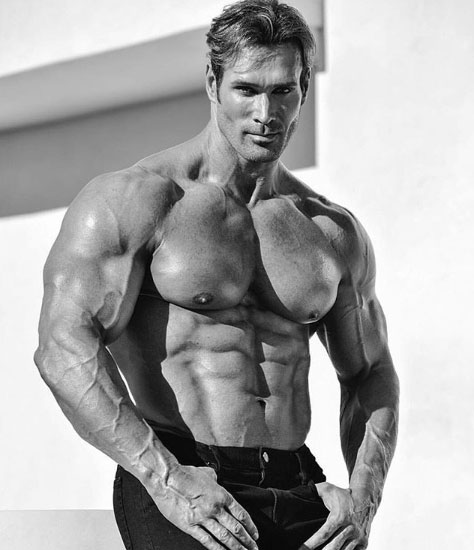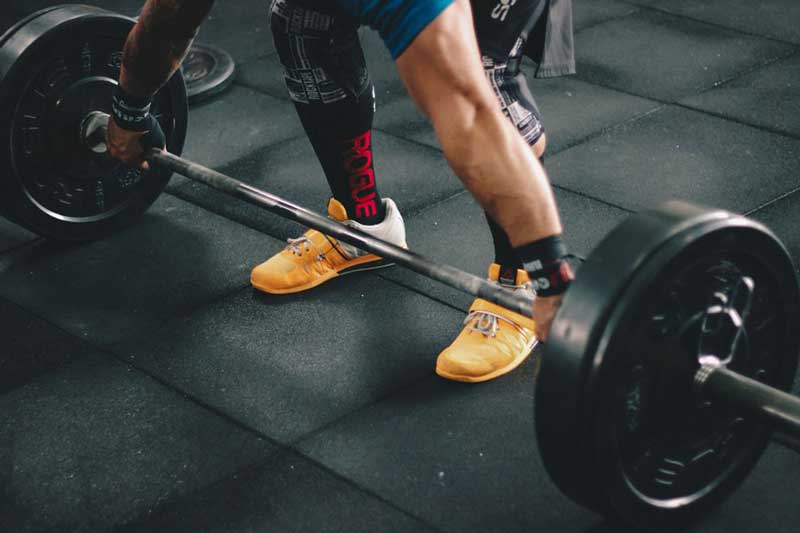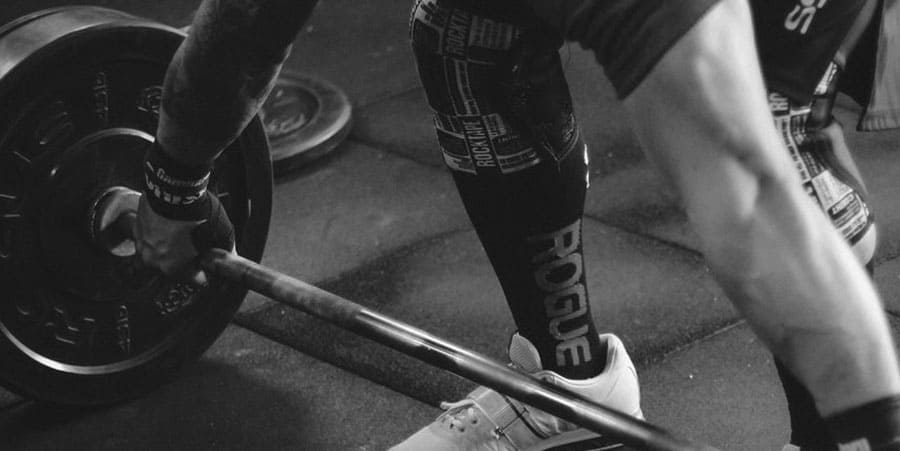With everyone from seniors to housebound moms now converted to strength training, if you want a gym physique, which is the best form of training to spend your time on?
A little aside here, multiple Mr Universe winner Mike “Titan” O’Hearn, which you will know from such famous TV shows as American Gladiators, and countless front cover magazines merges the two styles of training into his workouts, which he calls, Power Building.

From the onset strength training and bodybuilding set out to accomplish different goals. Both types of physical exercise involve muscular contraction and resistance.
Both will affect skeletal muscles and and some research even shows strength training can lead to increased bone density, and stronger tendons, joints and ligaments which is good especially as you age.
The difference is strength athletes want to be strong without necessarily having to carry a lot of muscle mass- think of gymnasts – seriously strong – and extremely muscular physiques, but they aren’t generally as big as bodybuilders.
Rowers, sprinters, soccer players, free runners, MMA fighters and boxers also find strength training beneficial as well as their regular anaerobic endurance training or circuit training.
If you’ve ever trained for a javelin throw at high school, played American football, thrown a discuss, or competed at rowing, spun a baseball or lacrosse ball, heck or if you perform freestyle wrestling, sooner or later even in your weight class you will always come across someone who is stronger than you.
Olympic Weightlifters at the lighter levels can lift weights most people can only dream about yet they are built like stick insects. What’s the common denominator here? Can you get bigger without getting stronger?
They might even have smaller proportions, or look extremely wiry or gaunt, so what gives? Why are they way stronger than you?

Strength ain’t always related to size. An ant after all can lift 20-50 times it’s bodyweight
Bodybuilders want the most amount of muscle possible. There are some pro bodybuilders who compete in the classic style class of course, based more on an overall proportioned physique, and not necessarily on massive proportions.
Then there are the huge gigantic mass monster bodybuilders who just want to be as freakishly big as possible.
There is a split in bodybuilding between symmetry and mass, judges of the famed Mr Olympia [bodybuildings highest accolade] have been criticized for leaning on the mass side in recent years, sacrificing symmetry for overall muscle size.
Why can’t they judge both on mass and symmetry?
Well they do now and this has seen the birth of the new classic physique style and seen than even split further into beach style fitness physiques (think toned and muscular upper bodies, and legs that need to be covered up to the knees with beach shorts…aka you can’t grow legs!).
To bodybuilders hypertrophy is everything. Are these guys freakishly strong? Mostly not. Some may have bigger arms than strongmen but they are nowhere near as strong.
Ronnie Coleman proponent of heavy lifting is now in bad shape, and can barely walk, after going through multiple hip and knee surgeries after his hugely successful bodybuilding career, in which he lifted the coveted Mr Olympia crown 8 years in a row. Something that may never be repeated.
Bodybuilders ego they say is in the mirror, power lifters and strength athletes in how much they can lift.
Some bodybuilders over the years have been freakishly strong, like Ronnie Coleman, and even as far back to the 70’s, Franco Columbo, Arnold’s old training partner. Franco was a power lifter before becoming a professional bodybuilder.
Other notable bodybuilders that trained hard and heavy over the years include 70s advocate of high intensity training Mike Mentzer, Tom Platz and Dorian Yates who adopted Mentzer’s high intensity blueprint, Heavy Duty.
Styles Make Fights
This old adage about the fight game is true to the old strength training v bodybuilding debate. Many bodybuilders adopt or think they are adopting strength training into segments of their workout, and vice versa for strength trainers and power lifters.
Bodybuilding training is different than strength training.
The ultimate goal of bodybuilding is to get a pump. Bodybuilding routines focus more on high volumes, the number of reps and set. Bodybuilders will routinely set 12-15 reps and above as the target to reach in sets.
Bodybuilders regularly train to failure, they use a poundage that will ensure they fail between reps 10-15, they may even get a training partner to help them grind out a few more assisted reps.
[It’s wise to have a training partner anyway if you are going to failure on exercises like the bench press].It’s all about working the muscle until it completely gives out, or is close to exhaustion. It involves a lot of isolation movements (working the individual muscles separately) as opposed to multi joint compound exercises, that strength athletes perform.
Strength trainers will go low more like 5-8. Power lifters work up to 1 rep maximums and can keep the majority of their lifts in the 1-3 range, unless they are lowering the weight and working on speed.

Try lifting a 300 kg squat for 15 reps. Not only can few mortals accomplish such a feat, but it is also not safe for your body.
One wayward motion at this extreme payload and you can damage your back for 6 months.
Power lifting competitions focus on lifting the highest weight possible, your best one rep max. It makes sense then to train as close to this as possible. Training 10-15 reps for 5 sets with a lowered weight load won’t accomplish what they need.
Bodybuilders want to tear down their existing muscle fibers so that once they leave the gym the repair process begins which forces the muscles to come back bigger and stronger resulting in larger muscle mass- hypertrophy in a nutshell.
Strength training taxes the neurological and central nervous system. It doesn’t force the body to build muscle mass to cope with the load, it forces the body to get strong and commit its neurological and muscular system to cope with the load.
It’s about muscle power, not muscle size.
Soviet Union Research On Strength Training Shows 90% of Max Is Key
The research by the soviet union into motor unit recruitment (amount of muscle fibers recruited by the central nervous system to lift the load) showed that strength trainers need to lift 90% of their 1-rep max to get the most benefit from strength training.
If your max deadlift is 200kg you would rep out 180 Kg. This will create the optimum anabolic environment where hormones would flow through your central nervous system and develop your strength.
As your body gets stronger your muscle force develops, and this study shows it can occur in as little as 4 weeks.
Why Should Bodybuilders Incorporate Strength Training Into Routines
Bodybuilding focuses on the physiology of the body, strength training on its neurological aspects.
But strength training can have fantastic results for bodybuilders. Think about it this way. Do you ever plateau?
If not you are lying to yourself or not really training that hard. If you are extremely smart you will be cycling the training intensity, building up reps, sets and poundages over several weeks, and cutting back when you’ve reached a peak, dropping down, and then building back up.
The goal of each cycle is to beat what you did in the last cycle- more reps or more weight usually. But after a while results become nominal. So you can either hop to the latest training fad, or try a new system every few weeks.
But consistency breeds results. If you keep chopping and changing your training program you will short change your gains.
So by adding in strength training into your routine for a few weeks- not a few reps and sets during your normal routine- but a complete 2-8 weeks training cycle- a cycle within a cycle– you will force your muscles to recruit more motor units.
FORCE MOTOR UNIT PRODUCTION
By doing this you will increase muscle force. When you go back to your medium to high volume training routine you will be able to lift more weight.
Along with using the bodybuilding principle of time under tension, you will be placing a higher active load on the muscles.
This will increase muscle activation. Alongside a hypertrophy routine, your muscles will grow bigger and stronger. Your added strength will allow you to lift larger amounts of weight and your muscle mass will increase.
You can build muscle by using lighter weight, but you will never look as thick as someone onstage who lifts heavy and also does some form of strength training.
Bodybuilding Results Take Longer To Come Than Strength Training
With bodybuilding you gotta be in it to win it. Strength training results can happen in as little as a month.
As it relies on recruiting fast twitch muscle fibers and the bodies neurological response (that’s why strength training uses the entire body), and it doesn’t require muscles to be torn down and rebuilt, results are faster.
A bodybuilding routine takes 4-6 weeks generally just to get going. Even longer when you are 40+. No wonder so many inexperienced or impatient rookies keep switching to the next shiny object.
Some people do that their whole lives and chuck in the towel or train like newbs from they hit the gym at 16 to 45.
Don’t be this guy or gal- define your goals and do the work it takes to get there. The first step is engaging your mind and to know how this system works. Then apply it.
If it worked for thousands of other it will work for YOU too.
A little tweak here or there…but no major deviation.
Multi-Joint Exercises The Core Of Strength Training
If you want to gain some serious strength that will prime your body for an explosion of muscle growth you need to train like a power lifter. The 3 fundamental lifts are the squat, the bench press and the dead lift.
That’s the 3 lifts power lifters do all in one day in a competitive weightlifting meet.
These exercises place massive stress on your central nervous and neurological system so you need a day of rest after each strength training day, if not you will burn yourself out.
Keep the weight high- but not majorly high and the reps low. Don’t try for a world record or you could thwart all your muscle building gains and put yourself out of the gym for ages.
Reps should be in the 3-5 range for strength work. You can test your 1 rep max at the end of the cycle. It isn’t necessary to test your 1 rep max but if you can’t hold back at least you will have it to look forward to at the end of your cycle.
Just don’t blow a gasket testing out your max lift, or keep coming back adding more rep on the deadlift, just to beat your new best PR.
Professional powerlifters only test their 1 rep maximum a few times a year to prevent injury and because of the recovery time.
Remember the mission here is to build core strength to prime you for more muscle growth. Injure yourself by trying for a world record and all your hard earned gains up to this point will have been damaged.
Lessons Learned From Over Doing Strength Training
Ronnie Coleman, need I say anymore? Dorian Yates also commented that his bodybuilding career would have lasted longer if he had reduced the amount of heavy weights he constantly hauled.
He trained super heavy and super intense with many forced negatives where he was majorly assisted on the concentric portion of the rep.
How Much Strength Training Does A Bodybuilder Need To Perform?
To assist in bodybuilding development work out what you need, and go on stage and compete and test the waters. If you are responding well to strength training you can experiment running strength cycles more often or doing them for longer.
Remember unless you are training for the Highland games or want to be a professional strongman, you don’t need to pull trucks or smash monster tires with a sledgehammer, although that is quite fun….
Take a break from your bodybuilding cycle when it finishes and try a 4-6 week strength cycle. Performing a few sets of 3-5 reps in your normal bodybuilding routine is not strength training. You need at least 4 weeks to see any progress.
After you have built up some strength you can regularly throw a 2 week strength cycle into your bodybuilding routine to keep up your strength gains, and see this overflow with increased hypertrophy (muscle) gains.
If your joints and muscles are sore, if you are sapped and looking flat, you are overdoing it. You need to find a happy medium, not everyone reaps positive rewards from strength training.
A little goes a long way, but too much can be devastating for bodybuilders.
And that my friend is why even with all today’s scientifically researched available information what works for one person won’t work for everyone. To quote this NCBI scientific study:
For the athlete or patient hoping to increase muscle size by weight training the best combination of intensity, frequency and type of exercise still remains a matter of individual choice rather than a scientific certainty.
Physiological changes in skeletal muscle as a result of strength training
70’s Golden Age Strength Training Success Stories
Arnold and Franco (made famous by Pumping Iron) put their “thick” physiques down to the fact they had powerlifting backgrounds before going into bodybuilding.
They had done the groundwork development with multi-joint full body strength building routines.
This prepared the foundations for them to take that functional strength base and move into bodybuilding, where hypertrophy is the name of the game. Maybe that’s why in his time Arnold was light years ahead of the competition.

